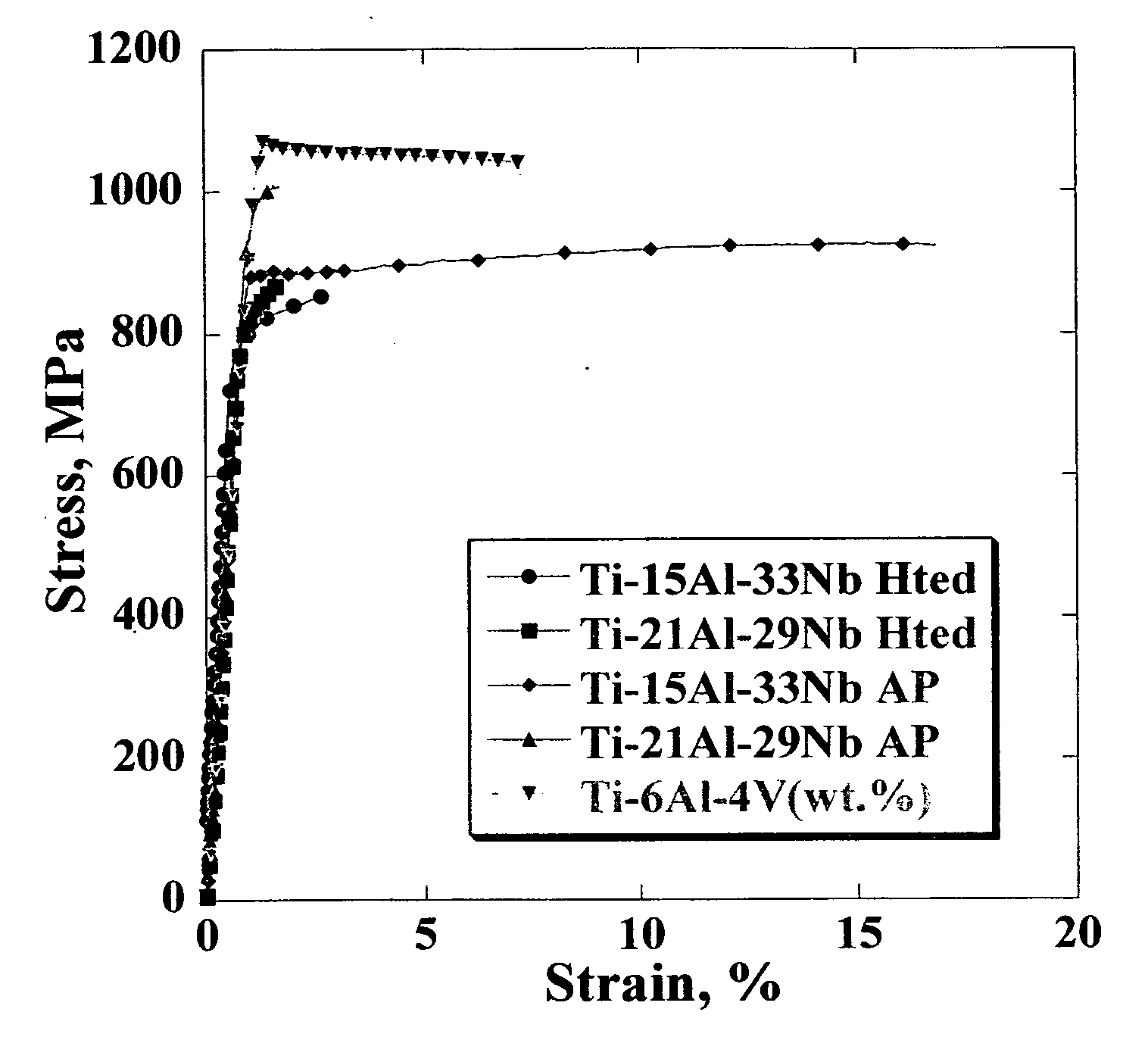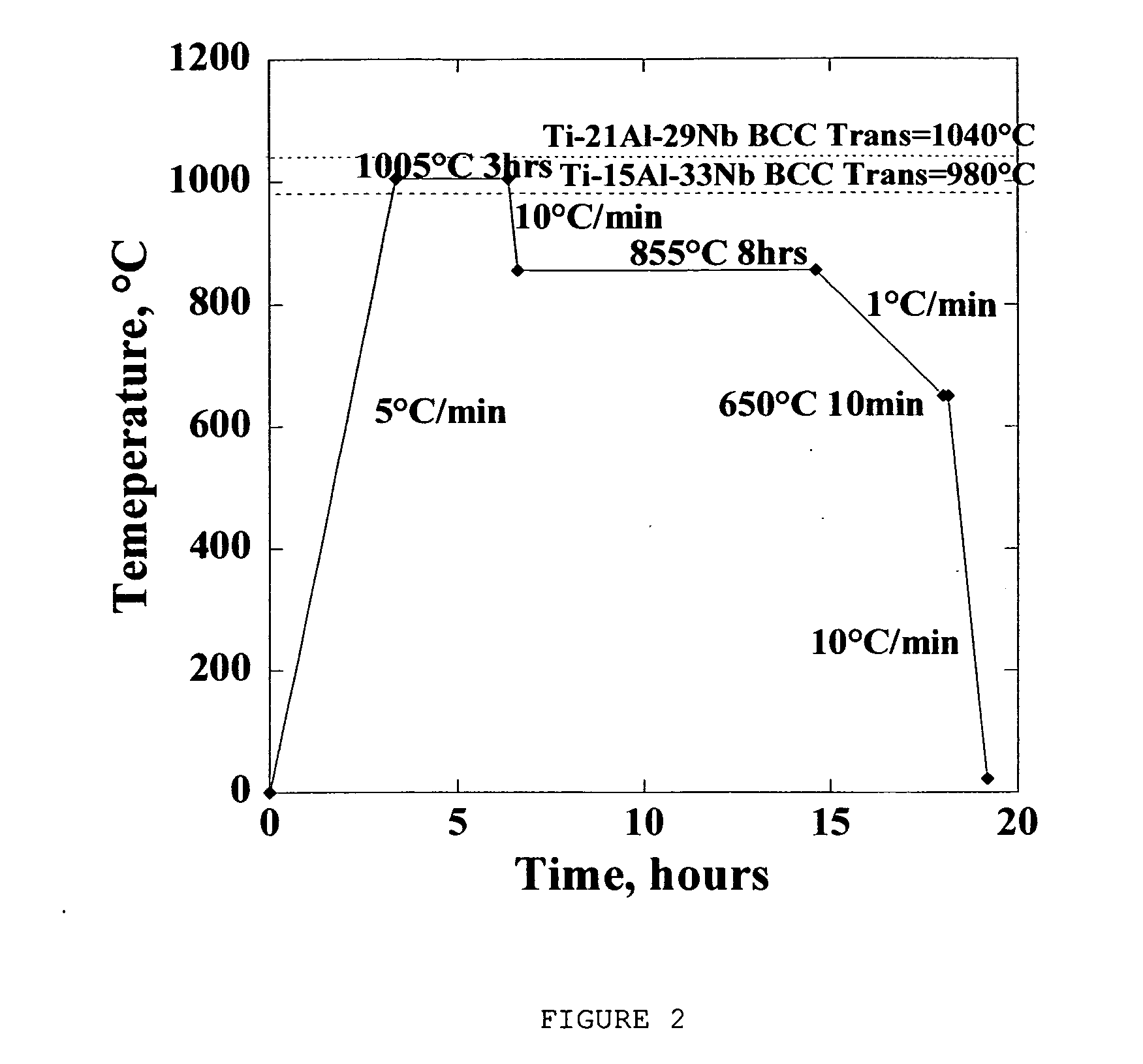Ti, Al and Nb alloys
- Summary
- Abstract
- Description
- Claims
- Application Information
AI Technical Summary
Benefits of technology
Problems solved by technology
Method used
Image
Examples
Embodiment Construction
[0080] There are several advantages of using Ti-15Al-33Nb(at. %) and Ti-21Al-29Nb(at. %) alloys over other metals, metallic alloys (including Ti-6Al-4V(wt. %), and ceramics. The commonly used implant alloy is Ti-6Al-4V (wt. %) [i.e. “old method”] which contains the toxic element, vanadium. One main advantage of the alloys of the present invention is that Ti, Al and Nb are nontoxic elements. The mechanical properties of 15Al-33Nb(at. %) and Ti-21Al-29Nb(at. %) alloys in particular surpass the requirements for an implant material. Surgical implants require strength levels greater than that of bone and an elastic modulus close to that of bone. The yield strength of Ti-15Al-33Nb(at. %) and Ti-21Al-29Nb(at. %) alloys range between 800-1200 MPa, whereas bone has an ultimate strength of 83-117 MPa. High yield strength is critical in applications such as hip prostheses, where the weight of the body is supported on this highly stresses point. Bone must bend without breaking and this is where...
PUM
| Property | Measurement | Unit |
|---|---|---|
| Pressure | aaaaa | aaaaa |
| Percent by atom | aaaaa | aaaaa |
| Percent by atom | aaaaa | aaaaa |
Abstract
Description
Claims
Application Information
 Login to View More
Login to View More - R&D
- Intellectual Property
- Life Sciences
- Materials
- Tech Scout
- Unparalleled Data Quality
- Higher Quality Content
- 60% Fewer Hallucinations
Browse by: Latest US Patents, China's latest patents, Technical Efficacy Thesaurus, Application Domain, Technology Topic, Popular Technical Reports.
© 2025 PatSnap. All rights reserved.Legal|Privacy policy|Modern Slavery Act Transparency Statement|Sitemap|About US| Contact US: help@patsnap.com



